Simple, Perfect Roast Beef Tenderloin
Excellence vs. Perfection
I have not always been a chef. No, my roundabout education began as a music major at a small junior college with a proud and wonderful music department. Every year at the end of spring semester the students gave recitals as part of their studies. I would sit and listen to amazing young musicians, many of whom would go on to prestigious universities and conservatories to further their studies. Their skill was undeniable as was their promise, and the applause they received was not feigned or given out of politeness. But if one was to compare one of the many vocalists, pianists, or horn players to concert professionals, there was no comparison. Scott and Jenny could in no way compare to Emanuel Ax or Vladimir Horowitz.
There is a difference between very good, or excellent, and perfect. In an Internet full of hyperbole and over-exaggeration, where superlatives are neutered by ubiquity, that can be hard to remember, but it is an important truth.
A perfect dinner
This is the season of greatest festivity, with friends and family coming together in the darkest month of the year to celebrate in the light of love and friendship—a sentiment often expressed through lavish and lovingly prepared meals. The holiday season is one where, as hosts, we perceive more keenly the difference between excellence and perfection. In this post, we will explain our method for making beef tenderloin that is, to our tastes, perfect. Read on to learn how.
Contents:
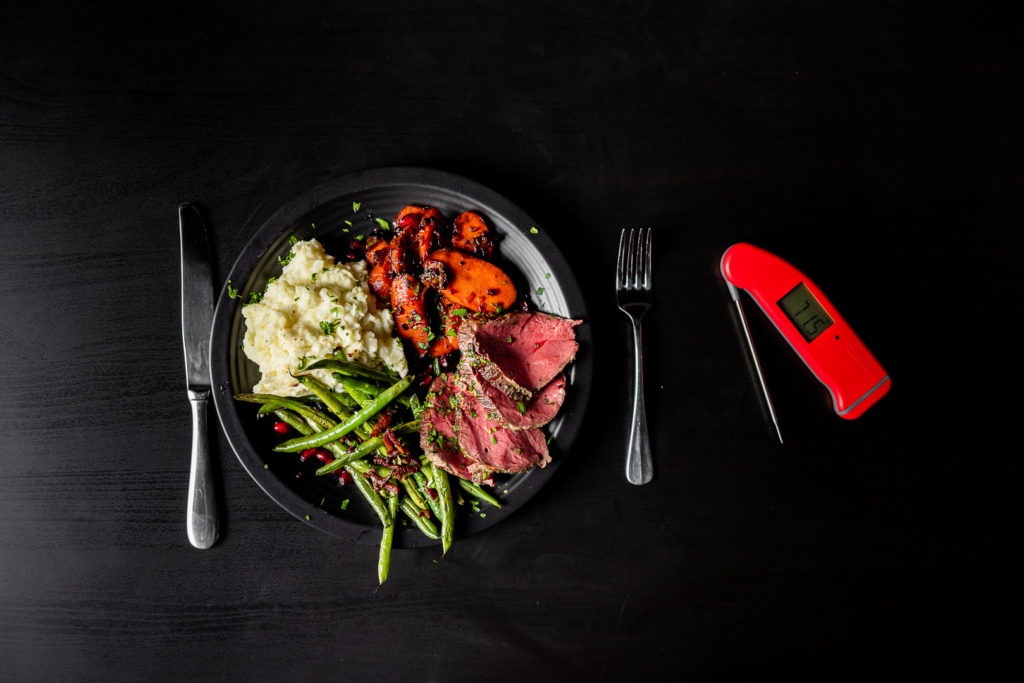
Perfect tenderloin?
So what does perfection mean in a beef tenderloin? An excellent tenderloin is nicely pink in the center, is not tough or dry, and has good browned flavor on the outside. A perfect tenderloin is done just right, with an even color from one side to the other with no grey ring. It is tender, enough to cut with a fork and is filled with its natural juices. Perfection means not overcooking any of this expensive cut. It means letting the quality of the meat shine in its own right. Tenderloin perfection means that no matter whether you serve it hot from the oven for a dinner or cold sliced on a mid-day buffet, it is tender and juicy.
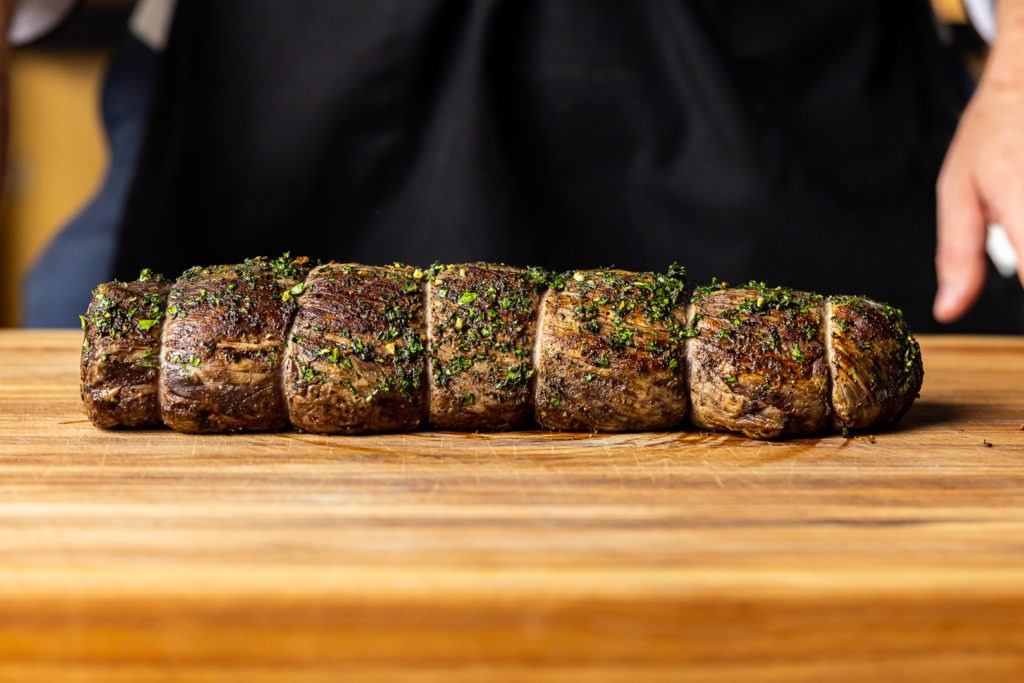
Tenderloin problems
Perfection, thus named, is inhibited by two prime elements: guests and biology. It is a sad fact that some guests like overcooked meat, even cuts of meat with the potential for a texture one could describe as “buttery.” If Uncle Phil just can’t abide even a shade of pink in his roast, is the rest of the party is doomed to suffer his philistinism with him? No! Tenderloin is actually a perfect dish for this circumstance. Tenderloin can be cooked to a perfect medium rare—which is as low as most guests will want their meat to be cooked—and any dissenters can be appeased by quickly browning their slice in a hot pan with some butter and, if you are feeling particularly magnanimous, a sprig of fresh thyme.
Biology is a more difficult adversary than Uncle Phil. The very composition of the tenderloin (which we will cover in greater depth below) presents challenges for the cook. Tenderloin is actually quite an unforgiving cut of meat. overcook it by just a few degrees and your beautiful, expensive roast will be tough and dry. So how can we keep in the good graces of this king of cuts? Let us look first at the tenderloin itself to learn what its nature will tell us about how to cook it. Then we will consider various methods for cooking, try a demonstration of them, and observe the results. In this way, we can hope to achieve a perfect roast despite the difficulty of the meat and the objections of Uncle Phil.
What is tenderloin?
Tenderloin, the psoas major muscle, is properly named: it is one of the most tender muscles of a cow. It runs from the last ribs of the cow back to the rear hip. The muscle is responsible for moving the leg forward, but not for lifting it. That lack of resistance work translates to amazing tenderness when cut for steak or a roast. It is also one of the most sought-after and priciest cuts, with a mere ~14 pounds of pre-trimmed tenderloin available per 1200 pound cow. Natural tenderness means there is little connective tissue in the meat, so we needn’t cook it to a high temperature to make it palatable.
➤Composition
Not only does the tenderloin have little connective tissue, but it also has very little fat. Among the leanest of the beef cuts, tenderloin relies on the muscle fibers themselves (not on massive seams of fat like a prime rib) for flavor and on protein-bound water for juiciness.
➤What that means for cooking
These biological facts combine to paint a picture of how we might cook this meat:
- it will be tasty and tender at lower pull temperatures because of the lack of connective tissue
- cooking it too far will dry it out because there are no fat stores to keep it moist and the contraction of the muscle fibers at high heat will expel the water bound in the muscle
And so
- we should try to avoid high temperatures and
- we should consider dissolving some proteins with salt before cooking to help retain the moisture
Accepted methods for cooking beef tenderloin
The food web and a great many cookbooks (very many of them highly reputable) recommend blasting a tenderloin in a hot oven, 450–500°F (232–260°C), for a relatively short time to cook it, followed by a counter rest. The justification lies in the air-searing of the exterior, creating a crust of delicious Maillard browning.
Other authors and chefs call for a lower heat and slower cooking, usually preceded by a sear in a hot pan for the Maillard effect. Less drastic thermal gradients should lead to a more even cook through the width of the roast, though we may be sacrificing a crust due to the natural basting that will occur over a longer cook, eliminating some of the crispness of the crust.
Some recipes call for a reverse sear, but the “flying blind” nature of searing after cooking, when the meat is already heated and stands in danger of overcooking, is hard to accept. Keeping a probe thermometer in the meat during a sear is difficult, and we want as close to an exact finish temperature as we can get. Based on our previous trials with prime rib, we opted to go for a chill-sear-cook method for one of our tenderloins. We tested the high-oven temp method with the other tenderloin.
We wanted to see which method resulted in a more perfect Christmas roast. So we got out our Smoke® dual-channel thermometer and got to work. The Smoke is perfect for larger roasts that take a little longer in the oven because the receiver allows you to go about your business while keeping a weather eye on your rising meat temperatures.
Method of experiment
To determine the best cooking method, we took two tenderloins of comparable size, salted them with about 2 Tbsp of coarse kosher salt, and tied them with butcher’s twine to create two roughly even cylindrical shapes. We placed Pro-Series® penetration probes ~¼” below the surface of each to track our chill temps and placed them in the freezer at 2°F (-17°C) until our Smoke’s low-alarm sounded at our set 29.5°F (-1°C) (roughly 90 minutes). At this point, the exterior of each roast was cold enough to be stiff to the touch—partially frozen. We prepared a rub of olive oil, black pepper and minced fresh parsley, thyme, and garlic to coat each roast.
We seared the first tenderloin on a 450°F (232°C) cast iron griddle (but a roasting pan can work too), then rubbed it with the herb-oil mixture and placed it on a wire rack set into a cookie sheet in a 225°F (107°C) oven, we re-set our penetration probe and set the high-alarm on our Smoke to 125°F (52°C). Lastly, we started a count-up timer on a TimeStackTM to keep track of the cook time.
The second tenderloin was rubbed with the herb mixture straight out of the freezer and placed on a wire rack set into a cookie sheet in a 475°F (246°C) oven. Again, we placed our Smoke probe in the center of the roast and set the high-alarm for 125°F (52°C). We used one of the other channels on our TimeStack to start a count-up for the high-oven roast.
When each roast’s high alarm sounded, we verified the temperature with a Thermapen® and allowed them to rest on the countertop to re-absorb juices and finish carryover cooking. The slow-heat roast was given about 10 minutes of rest, and the high-heat roast was given at least 20 minutes. (Lower heat cooking methods require less resting because the temperature gradients don’t have as far to equalize.)
Results and comparison
The roast in the high oven reached its pull temp in just about 45 minutes, while the tenderloin in the lower-temp oven took much longer, clocking in at about 95 minutes. The time difference was significant, but, as we’ll show, the wait was well worthwhile.
➤Color, crust, texture
The high-heat roast had a slight crust that impeded the initial knife cut but added very little to enjoyable texture. It was beautifully pink in the pink center but was surrounded by a 1/4–1/2” grey band all around the edge. Once we began cutting, the meat yielded nicely to the knife and was tender and tasty. It was a great roast, one that a cook could put before guests without embarrassment and which would prompt sincere compliments.
But the low-heat roast. Oh, the low-heat roast. The low-heat roast had no substantial crust to it, but was perfectly pink and evenly colored from edge to edge, with no discernable grey band at all. The tenderloin was visibly juicy and yielding under the knife and had a texture that was surprising in its tenderness and softness. You could cut it with a spoon. It was a roast that a cook could present with the full expectation of immediate and enthusiastic praise (as well as fond mentions months later).
➤Herb rub
One other difference was noticeable aside from the coloration and texture of the meat itself, and that is the effects of the heat on the herb-rub. The herbs and garlic on the high-heat roast had a much paler flavor than the low-heat version. This makes sense, as the high heat drives out the volatile oils and fragrances from herbs, and cooks the garlic more completely. The herb rub on the low heat-roast was more vibrantly herbaceous, with a more pronounced garlicky bite. We will address that in the recipe below.
Final outcome
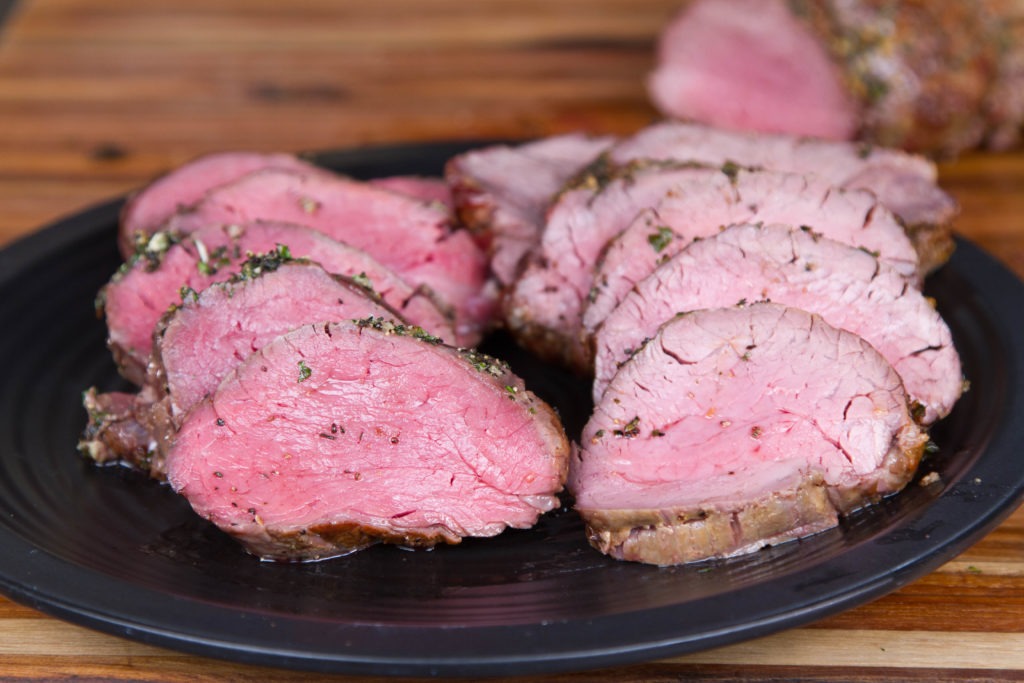
Both of these roasts were pulled from the oven at 125°F (52°C). Notice the consistently pink meat edge to edge on the left. This is the difference between excellence and perfection. The high-temperature tenderloin is very tasty, but the low-temperature tenderloin is evenly colored, soft, juicy and amazing.
Taking thermal control of your beef tenderloin roast by limiting the thermal gradients and monitoring the temperature results in a stunning presentation piece of the highest quality. And the Smoke thermometer, with its Pro-Series probes and wireless receiver, makes getting perfect easy.
Perfect Roast Beef Tenderloin
based on a recipe by Bon Appétit
Ingredients
- 1 beef tenderloin, trimmed
- Coarse kosher salt
- 1/4 C olive oil, plus more for searing
- 1 tsp black pepper
- 2 Tbsp minced fresh parsley
- 1 tsp minced fresh thyme
- 2 cloves minced garlic (to lessen the garlicky bite, you could cook it slowly in the oil over medium heat for a minute or two, then let the oil cool with the garlic in it)
Instructions
- Tie (or have your butcher tie) the tenderloin into a mostly uniform shape, with the tail-end folded up under the roast to help form a uniform thickness.
- Salt the tenderloin generously and place in the freezer until the outside is chilled and well firm (partially frozen), about 30°F (-1°C).
- Preheat an oven to 225°F (107°C).
- Preheat a cast-iron skillet, heavy roasting pan, or griddle to 450°F (232°C).
- Add 1-2 Tbsp oil.
- Sear the tenderloin on all sides until well browned—about two minutes per side.
- Place the roast on a wire rack set in a baking sheet.
- Insert a probe into the thickest section and place the roast in the preheated oven.
- Set the high-temp alarm on your Smoke for 125°F (52°C) for medium rare (higher for more well-done) and cook the roast.
- When the timer sounds, verify the temperature with your Thermapen®. If the lowest temperature seen is 125°F (52°C), remove it from the oven and allow it to rest on the counter for 5-10 minutes before slicing and serving.
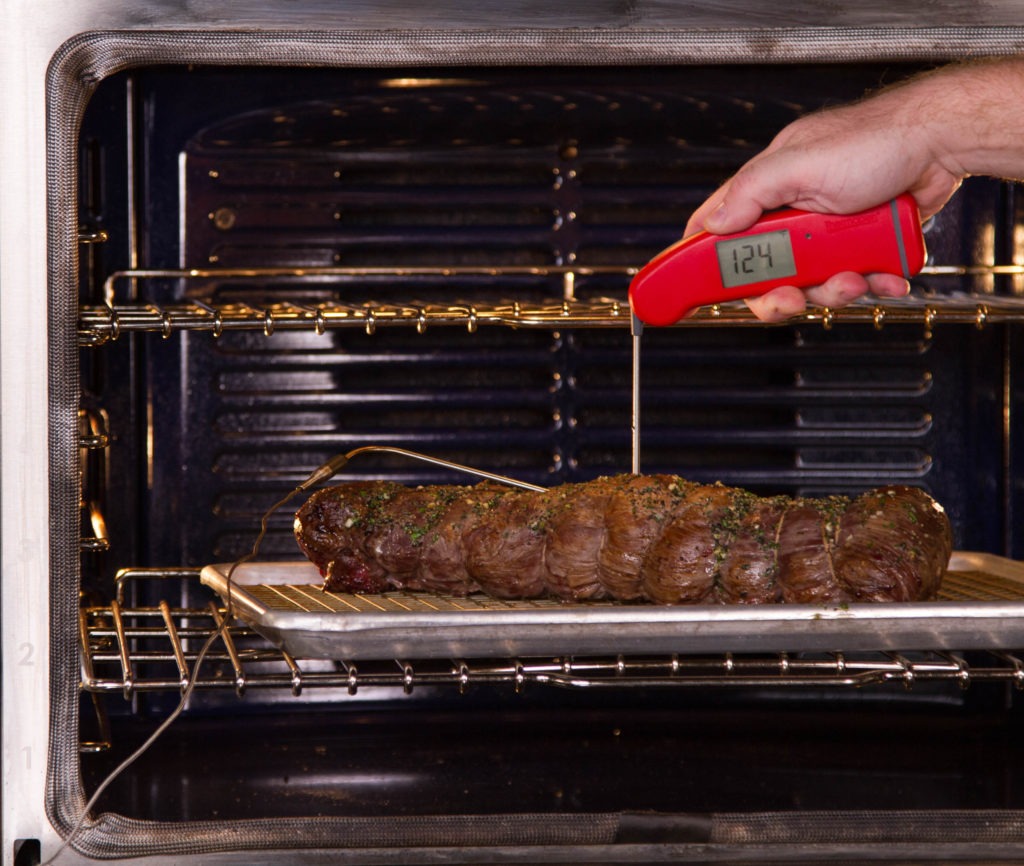
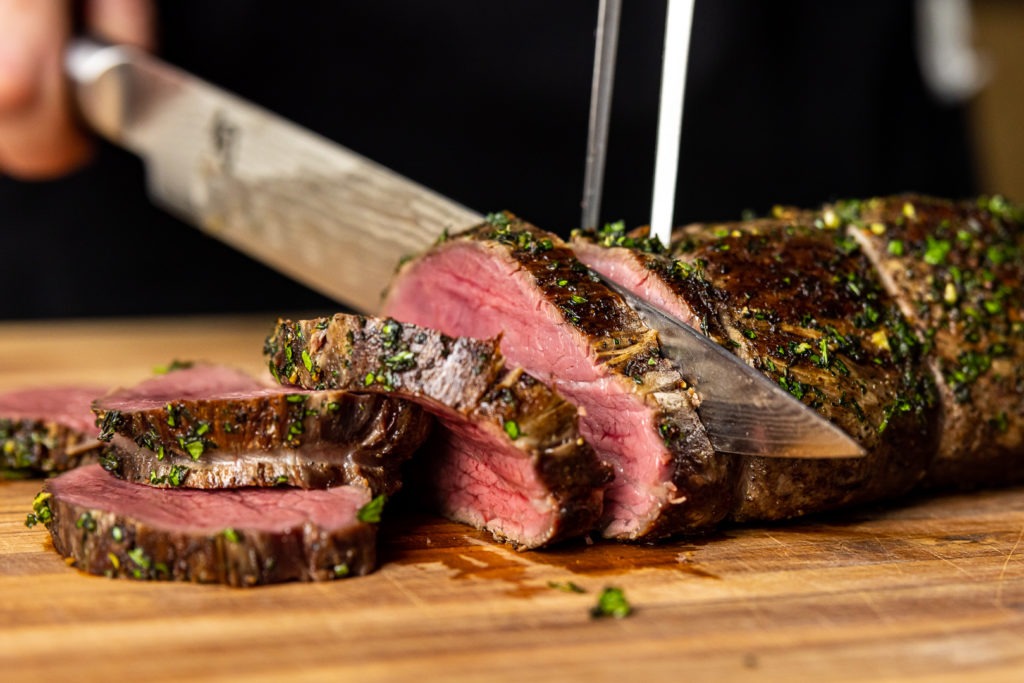
For many things in life, excellent is good enough. But for your holiday tenderloin roast, you truly can have perfection. All it takes is a little extra preparation and careful monitoring of your internal temperature.
Shop now for products used in this post:
References
- Bon Appétit
- Univeristy of Guelph Department of Animal Biosciences, Major Muscles of the Carcass
- J. Kenji López-Alt on SeriousEats.com


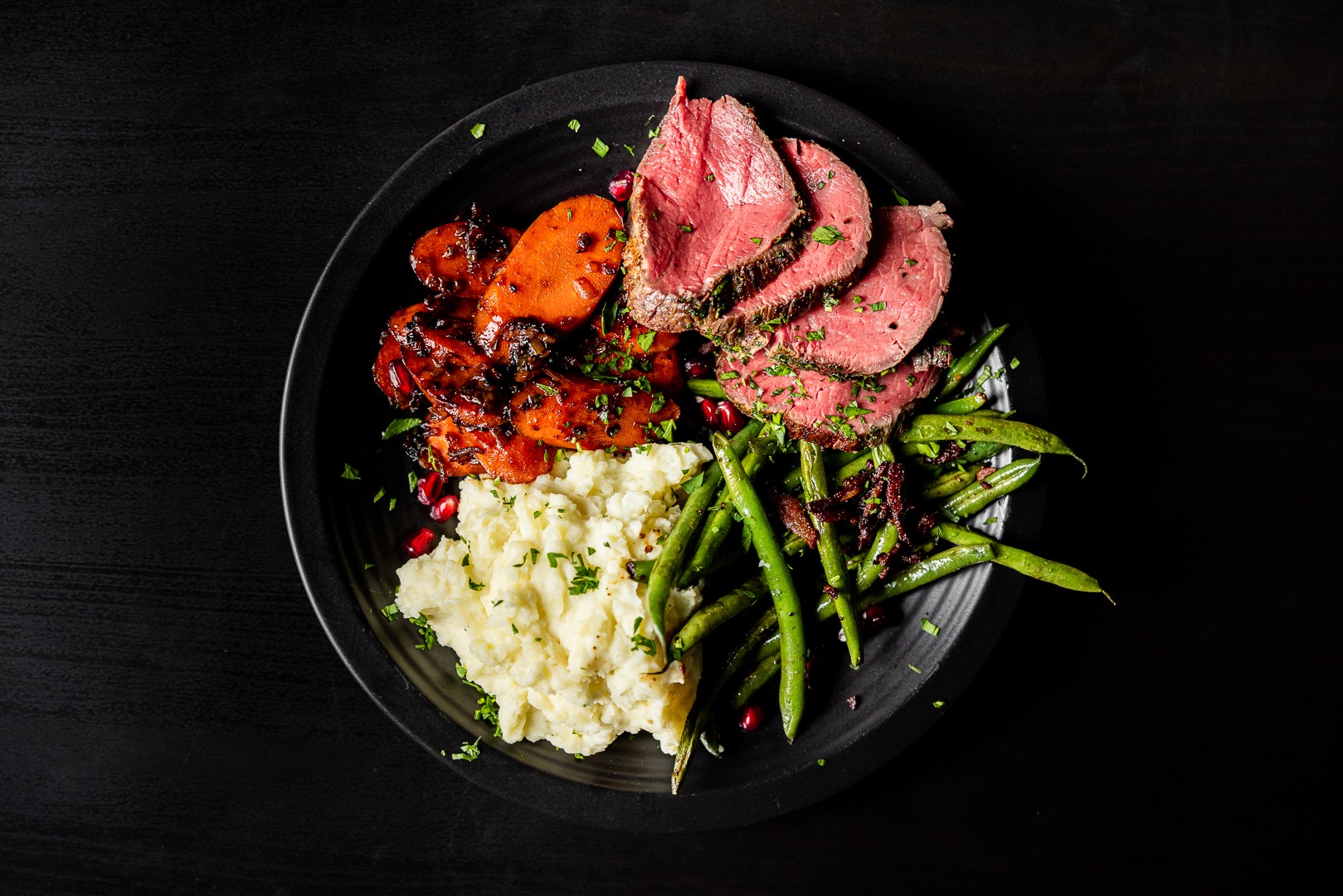
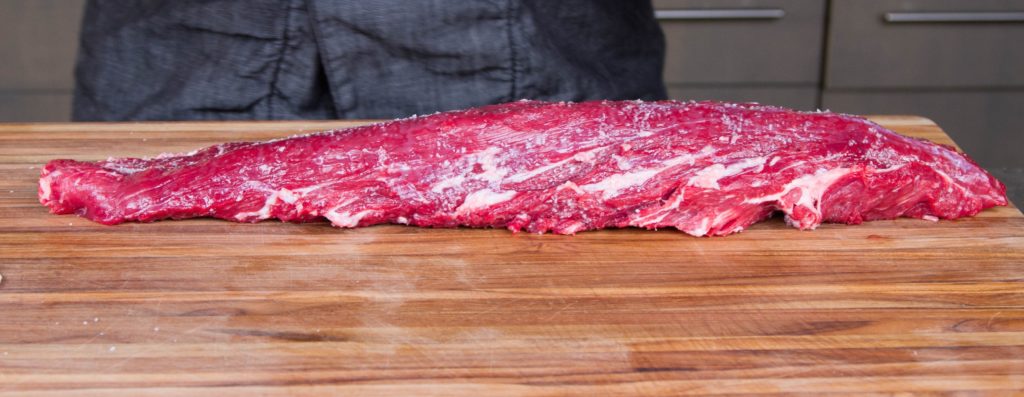
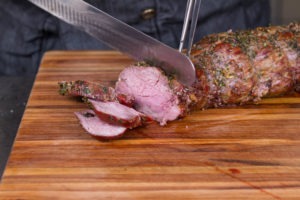
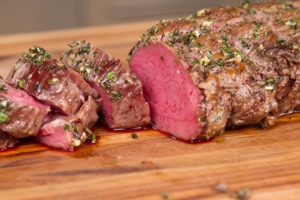





![[alt text]](https://www.thermoworks.com/content/assets/images/products/Smoke_generic-01.jpg)
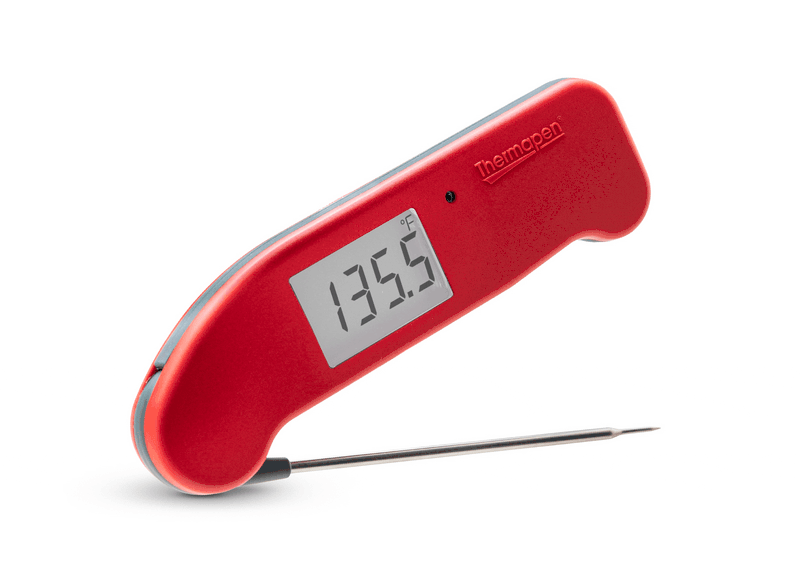
![[alt text]](https://www.thermoworks.com/content/assets/images/products/TimeStack_Blue-01.jpg)
Can you use a chef alarm for this – I do not have a smoke alarm – & if so how to use it.
Doris,
Absolutely use your ChefAlarm! The Smoke worked so well for us because we were cooking two at a time, but you can use your ChefAlarm and the included penetration probe of in the deepest part of your tenderloin and still set the alarm to 125°F to get great results. If you use it for the chilling process, you can also set the low-temp alarm for 30°F and place the probe just below the surface. Good luck with it and let us know if you have more questions!
The chef alarm works well. It’s fast, accurate and the alarm is loud enough to get your attention.
A tenderloin is about the least beefy tasting cut so not over cooking to keep its great buttery texture and a good herb rub for flavor is a good target. The lower you cook it the more even it’s going to be. Try a salt rub for a day or two then let it sit out to warm up then a quick trip to the freezer to get the exterior cool. Dry it, sear it for some flavor, then the rub and low and slow in the oven.
I just made an eye round using the low-temp cooking method and my Smoke Alarm with the long probe from my ChefAlarm and the one that came with the Smoke Alarm. The shape of the roast was extremely irregular – very thick at one end and very thin at the other end. I tried to chill the thin end by placing that part of the roast in a plastic bag in iced water for an hour. That gave the thick end time to warm slightly while the thin end was cooled to near freezing. I set the oven temp to 200ºF and raised it to 225ºF when the internal temp of the meat reached 110 at the thick end. I removed the roast when the internal temp reached 115ºF at the thick end. By that time the temp at the thin end was up to about 125ºF. I left the probes in place while it rested and was pleasantly surprised that the internal temp at the thick end rose to 123ºF and the temp at the thin end actually dropped to 123ºF. I let the roast cool completely and placed it in a very cool place (outside) overnight. The next morning, when I sliced the whole roast on a commercial slicing machine, it was perfectly uniformly rare-medium-rare.
I’ve done these roasts many times before, but the Smoke Alarm gave me the most perfectly and uniformly cooked piece of meat I’ve ever made. Being able to monitor the temperature at both ends of the roast at the same time was what made all the difference. The Smoke Alarm is one of the best designed cooking devices I’ve ever used. It’s really indispensable.
A keeper; thanks. As to the results, I can understand the temp impact on the rub, but I’m confused about the difference in even coloring. I’d think that one would pull the high-temp roast at a lower temp, say 121 – 123, to allow for more aggressive carryover cooking. Wouldn’t that better balance the results and be a fairer comparison?
Frederick,
Thanks for writing in! You might make a fair point, but the thermal gradients are still going to be pretty stark in a 475°F oven.
Tenderloins, with their lack of thickness, don’t have as much thermal mass surrounding the center. So, given similar oven conditions and a similar center temp a large roast, like a prime rib, will have more carryover cooking than a thin roast like a tenderloin.
Because of this thermal-pressure difference, you just aren’t going to get the same even color. You may get less of a grey ring, but you will also be more likely to have a red rather than pink center. If we’re looking for even color across the whole roast, low temp is the way to go.
If you try it out, let us know how it goes!
Makes sense to me, now, Martin. And very timely, as I’m slow roasting a prime rib at 225º for Christmas. I got a surprising +10º carryover rise last year from a 200º cook, and this article and your reply helps me understand it. Thanks!
What is the purpose of freezing before cooking? Thanks! PS: I love my Smoke!
Debra,
Freezing before cooking creates a barrier of cold under the surface of the meat so that when you sear the meat, it won’t be able to push the internal temperature as high. The cold ring under the surface acts as an insulator for the sear so that no overcooking occurs. It’s a great way to help ensure that you have perfect edge-to-edge color.
Thanks and enjoy that Smoke! I love mine, too.
We do Beef Tenderloin similarly to #2… only we don’t pre-sear the meat. Instead we do a reverse sear at the end.
We (1) put the seasoned meat into the lower temperature oven; (2) when it is at 125 we take it out, tent it and let it rest. (3) When the resting temperature begins to drop / gets back down to 125 we quickly toss it into a 450 degree oven / under the broiler (turned a couple of times) just long enough to get a nice dark sear on the outside.
You end up with that nice even cook throughout, AND the flavorful crust so many of us enjoy!
The resting is what saves you on this after the cook and before the sear. I’m glad this method does so well for you!
Looking forward to trying out the low temp roasted version. i have a 6.5 lb tenderloin roast. Do you have a general idea of how long this will take? chilling the roast down to freezing promises to extend the time somewhat. Is 2-3 hours a good estimate?
Jason,
Yes! 2-3 hours is a good estimate. I think you will enjoy the results exceedingly!
Martin,
it was as close to perfect as anything ever needs to be. Thanks for the recipe.
Thank you this recipe! My tenderloin was perfect!
90 minutes in the freezer, pan seared on a cast iron pan, then about 90 minutes in the oven, at 126 degrees.
Sue,
I’m happy to hear that you liked it! Happy cooking!
Thanks for clarity on timing!
I am now brave enough to attempt this for dear friends!
Psyched!
I’m really enjoying your recipes and commentaries, Martin. This one in particular was as clear as a bell and, what is more, motivating! Thanks.
Thank you so much!
I have always been concerned that reverse searing creates a rapid change of temperatures at the end during the sear when grilling, making it difficult to get the exact desired pull temperature. Partial freezing of the tenderloin roast allows searing first which is great. It is far easier to obtain the desired pull temperature if cooking on low heat at the end. How well does this technique work for thinner cuts such as steaks and do you recommend it as opposed to the reverse sear? If so, after the sear, would you recommend turning only once, or more?
It can work wonderfully for smaller cuts like steaks. But when it comes to steaks, I tend to favor the reverse sear. I pull from the oven 15–20°F below my target and then sear it in a hot pan. If you give yourself enough thermal space, you can achieve excellent results. And yes, diring the final sear when reverse searing, I try to only turn once.
Followed the directions as stated. Had the roast on top of potatoes. Pulled it when thermo probe was at 128 F. Found the roast after sitting was still very under cooked. I had checked it with thermapen and it did register 128.
Could the freezer have caused the meat to be extremely bloody? Also IMO it did seem very rare.
What temperature do the rest of you use to assure a nicely pink but not so bloody roast?
If it read 128°F it was 128°f regardless of how frozen it started out. But in truth, 128°F will be on the rare side for some people. Give it another 5°F and you might like the result better. Do make sure you’re tempting the meat all the way through, though! Insert the Thermapen almost all the way through the meat and pull it back out slowly, looking for the lowest temp you see. You probably did that, but if not, it’ll help you have a better idea of the true doneness.
I listened to the low and slow, then fire it up…my first while beef tenderloin was PERFECT! pink to the edges, not raw. It pleased everyone! My meats have all been amazing since I purchased my Thermopen. I absolutely love it!
I’m confused. Are you searing the roast or not. In your description of the recommended method you say:
The second tenderloin was rubbed with the herb mixture straight out of the freezer and placed on a wire rack set into a cookie sheet in a 475°F (246°C) oven.
BUT in the instructions you say to sear the roast first. WHICH?
Sear first! We did a test, one with a sear and one right out of the freezer. But we found that the one where we freeze first, then SEAR then rub with herbs was better.